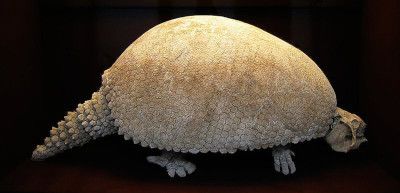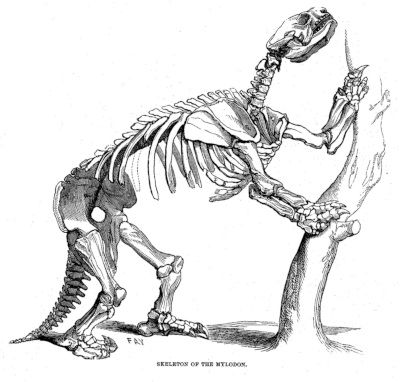Hello everyone,
Perhaps it should go without saying, but I hope you are all doing well. I mean, it's not like I want you to suffer — that would be rather strange, wouldn't it. I sincerely hope you are happy, dear reader.
I don't have an essay for you this week either, and I won't by next week.
I have been reading up and watching documentaries on Charles Darwin and his legendary voyage on the HMS Beagle.
I have also been preparing to launch an audio version of some of my letters; I will be recording a few this week, hopefully to launch next week!
Here's two recommendations for you right off the bat:
- The Theory of Evolution — How did Darwin come up with it?: (~5 minutes)
- The Making of a Theory (~30 minutes)
- The Genius of Charles Darwin (3 part documentary, ~1 hour each)
A tale of tails
So I've decided to talk to you a little about peacock's tails.
Did you know that the vibrant display of a peacock's tail used to send Charles Darwin into a rage? Well, I heard this in a documentary, which may or may not have been exaggerating...
The reason is because the colourful attraction of the male peacock seemed detrimental to its survival. If it was just natural selection — survival of the fittest — how could it have arisen?
Happily, Darwin was able to soothe his aching head by solving this mystery himself. The answer; sexual selection.
The female peacocks preferred the males with the colourful, elaborate tails. Therefore those were more likely to pass on their genes. Thus generation, after generation male peacock's grew ever more colourful and elaborate tails up until the present day.
Even though it harmed their chances of survival, in radically improved their chances of reproduction if they survived. In order to pass your genes to the next generation, survival isn't enough; you also need to reproduce.
This raises the question, though; why would female peacocks prefer males with vivid, elaborate tails? Why would their preferences be for mates that essentially become walking targets?
The answer to this is a little counter-intuitive, but it is because elaborate, complicated tails are difficult to make.
A gene's fitness is how well it can propagate. In an organism like a peacock, it would entail creating a strong, healthy and fertile peacock. Better genes will be able to produce stronger, more successful peacocks.
For a female peacock to have her genes propagate through time, she should want to pick a mate that was strong, had a good immune system, was fertile etc.
A male with better genetic fitness will be better at all of these things.
However, you can't see these things; it would be difficult for a female peacock to determine which male is the best for this.
Here's where the tail and the fact that it is hard-to-make comes in.
An elaborate pattern means it is more prone to error.
The body of an organism — in this case, a peacock's body — is constructed from the code in its genes.
To construct a complex, elaborate structure such as the peacock's tails, precise instructions are required. In other words, it needs to be genetically fit.
The strength, fertility, instincts, immune function are all similarly the result of the genetic fitness of the peacock.
While female peacocks can't see the genes, nor all of these other beneficial traits directly, they can see the colour patterns on the males tails.
The male's tail signal the male's genetic fitness to the female.
While they do not help the male survive, being more genetically fit does.
The female is attracted to the colourful tail because it is reliably bundled with traits that would make her offspring more likely to survive and reproduce.
So I am still writing up my piece on the history of evolution. It's not finished. I won't have it next weekend either, as I'll be hiking.
I hope my little piece on peacock's tails was enjoyable to read.
I want to make this next essay fun. It seems to me that Darwin was a bit like a detective; he travelled the world collecting and deciphering clues and evidence and eventually solved what was arguably the greatest mystery of the time.
I feel similarly like a detective but instead unravelling the details of his life. In everything I have read so far, there was never a sudden epiphany or "eureka" moment, rather a gradual development of ideas.
It started with him noticing inconsistencies with the prevailing view of creationism with what could be seen in nature; why would a creator make two almost identical species of rhea — a type of wild bird — occupy virtually the same territory? Why was it that the fossils he found on his expedition resembled the modern fauna nearby?
The Mylodon fossils he found resembled the nearby sloths; the glyptodon fossil resembled the local armadillos.


Why did the fossils look like giant versions of similar animals in the same area?
Indeed it couldn't have been a coincidence? Could it be that the fossils were the ancestors of the modern sloths and armadillos?
He had started his journey on the Cape Verde Islands off the coast of Africa and ended it at the Galapagos islands off the coast of South America. Both of these environments were very similar environments to one another, so why did they have such different varieties of plant and animals living there?
Furthermore, why did they resemble the fauna and flora of the nearby coasts? Mainland Africa and South America had very different environments to the Cape Verde Island and the Galapagos islands, respectively. Yet, the wildlife on both these archipelagos resembled that of the nearby mainland. Rather than each species being designed to live in a specific environment — which was the mainstream view of the time — what made sense was this; a long time ago, creatures from the mainland found their way to the islands and, over many generations, adapted to them.
What Darwin suspected is that the idea that species were fixed. Once upon a time, the sloths we know of where the giant Glypadons, the armadillos we know of were the massive Mylodons and the ancestors of these archipelagos lived on the mainland. Species evolve from other species.
Despite the Galapagos — his final destination — consisting of very similar environments, each of the islands had distinct forms of fauna with different varieties of turtle, finches, mockingbird and iguanas. In seeking to unravel the mystery of the diversity of life here, he inadvertently uncovered the explanation for the diversity of all life on Earth.
A friend suggested that I write up an article rather than a letter for this piece. The scope is enormous, after all. It is how we came to explain the diversity of life — and ultimately — it is our origin story.
One day we woke up in this world, this strange circumstance with the ability to wonder why. I'm not sure if we'll ever get to the bottom of this or if there indeed is a bottom. But understanding how life evolved is a crucial piece.
And this is what I will be covering in my next piece; stay tuned!
Once again, thank you for reaching the end and being interested in what I have to say.
Stay well everyone,
Sashin
Discussion